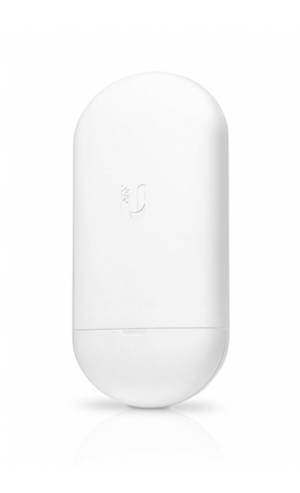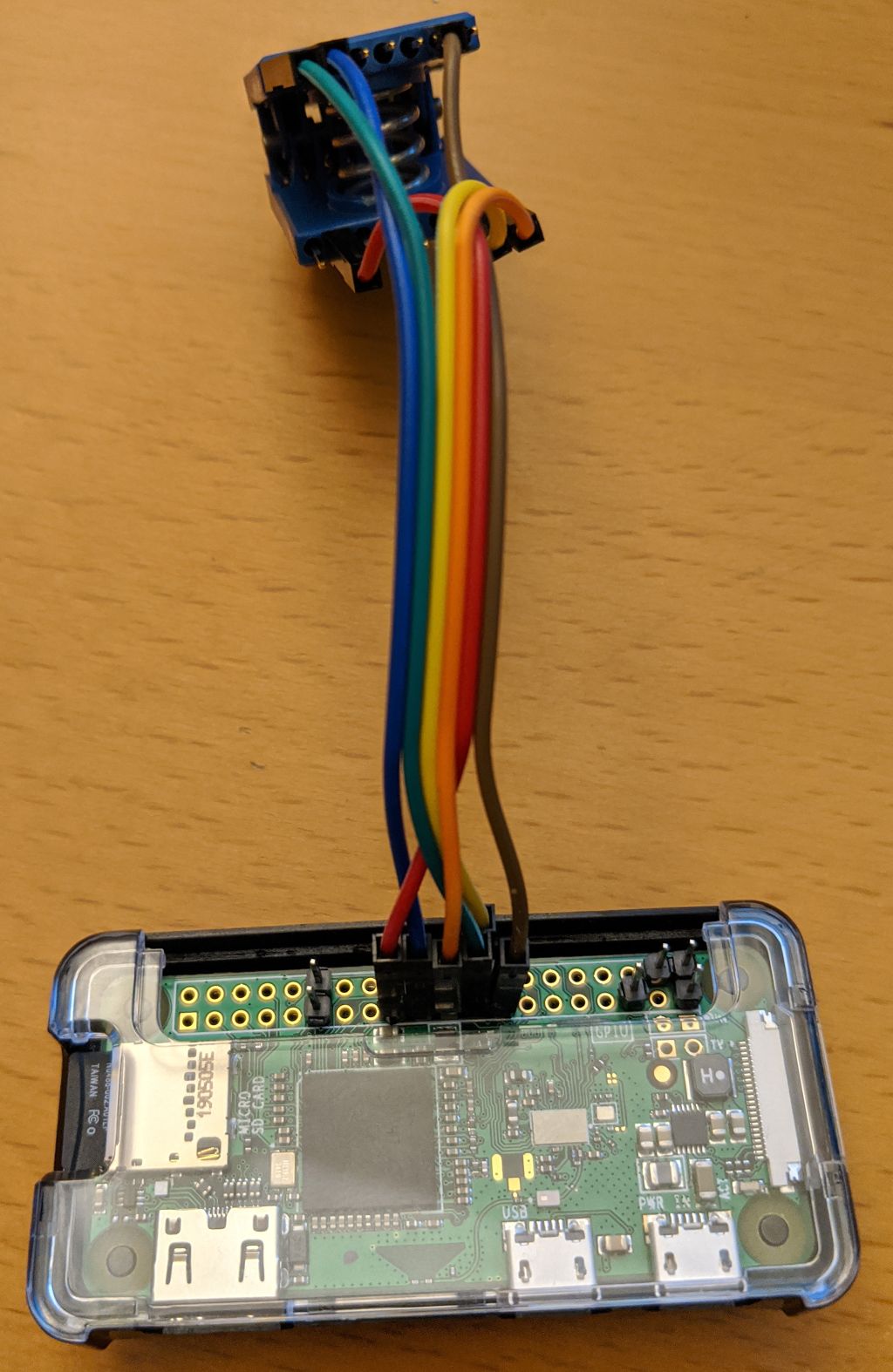Difference between revisions of "Ubiquiti NanoStation 5AC Loco"
(→Pinouts (untested, please proceed with caution!): swapped orange and green, that was easier in the cabling) |
|||
| Line 103: | Line 103: | ||
|8||SO | |8||SO | ||
| | | | ||
| − | | | + | |orange |
|- | |- | ||
|23||SPI0 SCLK | |23||SPI0 SCLK | ||
| Line 109: | Line 109: | ||
|16||SCLK | |16||SCLK | ||
| | | | ||
| − | | | + | |green |
|- | |- | ||
|25||GND | |25||GND | ||
Revision as of 21:00, 8 January 2020
The NanoStation 5AC Loco is a directional, weather resistant, PoE powered radio with a beam width of 90 degrees and a secondary omnidirectional radio. This makes it useful for simultaneously meshing on one radio while providing an access point for client devices on the other.
Contents
Files
MassMesh Firmware (Factory) (Latest)
MassMesh Firmware (Sysupgrade) (Latest)
Flashing
From OpenWrt
- Download the latest MassMesh sysupgrade firmware.
- Connect to the Nanostation and enter its IP address into your favorite web browser.
- If you are using another version of OpenWrt, please refer to its documentation for details about its IP address.
- Navigate to System → Backup / Flash Firmware → Actions: Flash new firmware image.
- Choose the sysupgrade file previously downloaded and click Flash
- Wait for the device to complete and reboot (This can take up to 5 minutes.)
From Stock Firmware (Ubiquiti AirOS)
Downgrade Ubiquiti AirOS
- Download the Stock Firmware Image v8.5.0.36727.
- Power on the Nanostation via a PoE injector. (This is the **red** ethernet port on your injector.)
- Connect the LAN side of the PoE injector to a computer.
- Assign a static IP/netmask of
192.168.1.25/24to the computersudo ip addr add 192.168.1.25/24 dev eth0
- Use a browser to visit http://192.168.1.20/
- Login using the set password or default credentials
ubnt / ubnt - Navigate to settings and downgrade the stock firmware to v8.5.0.36727 using the downloaded image file
Install The Mass Mesh OpenWrt Image
- Download the latest Mass Mesh firmware here.
- Copy the firmware onto the nanostation. (We like to put it in the
/tmp/directory.) - Open a secure shell on the Nanostation.
ssh ubnt@192.168.1.20 - Patch the fwupdate.real binary a la the instructions here.
/tmp/fwupdate.real -m /tmp/openwrt-massmesh-meshradio-ath79-generic-ubnt_nanostation-ac-loco-squashfs-factory.bin
Downgrade Ubiquiti AirOS With An External Programmer
When your nanostation is bricked, or if the stock firmware won't let you flash our custom firmware, you can use the In-System Programming (ISP) technique to reflash the device (see also the Flashrom wiki. You're going to need:
- a Pomona 5252 test clip (https://www.digikey.com/product-detail/en/pomona-electronics/5252/501-2059-ND/745103), ~$16
- a raspberry pi (e.g. a zero w) ~$10
- some header pins and prototyping wires to connect everything
The Nanostation has a Macronix MX25L12835F rom chip (datasheet), which is an SPI chip with 16 connectors good for 128 Mbit of storage.
We can use Flashrom running on a raspberry pi to read and write that chip, if we hook up the Pomona 5252 test clip to the MX25L12835F and connect it to the correct SPI pins on the pi:
(note: the SPI1 CE0/CE1 pins are not labeled on this image)
Pinouts (untested, please proceed with caution!)
The Raspberry Pi has 2 SPI interfaces, SPI0 and SPI1.
On the Raspberry Pi boot partition, make sure to update config.txt and uncomment the line that reads
dtparam=spi=on
After a reboot, you should see the spi device files:
root@raspberrypi:/home/pi# ls -laF /dev/spidev0.* crw-rw---- 1 root spi 153, 0 Jan 7 01:44 /dev/spidev0.0 crw-rw---- 1 root spi 153, 1 Jan 7 01:44 /dev/spidev0.1
Now connect the Raspberry Pi to the Pomona clip. Choose either SPI0 or SPI1.
| RPi SPI0 | RPi SPI1 | Pomona Clip | Notes | Color in picture below | |||
|---|---|---|---|---|---|---|---|
| 17 | 3.3V | 17 | 3.3V | 2 | VCC | DO NOT connect the 3.3V/VCC pin if you choose to power the nanostation directly instead! | red |
| 19 | SPI0 MOSI | 38 | SPI1 MOSI | 15 | SI | blue | |
| 21 | SPI0 MISO | 35 | SPI1 MISO | 8 | SO | orange | |
| 23 | SPI0 SCLK | 40 | SPI1 SCLK | 16 | SCLK | green | |
| 25 | GND | 25 | GND | 10 | GND | brown | |
| 24 | SPI0 CE0 | 12 | SPI1 CE0 | 7 | CS | yellow | |
Useful resources:
Condensed Command-list
Flash The Stock Ubiquiti Firmware via TFTP
wget https://dl.ubnt.com/firmwares/XC-fw/v8.5.0/WA.v8.5.0.36727.180118.1314.bin cp https://dl.ubnt.com/firmwares/XC-fw/v8.5.0/WA.v8.5.0.36727.180118.1314.bin firmware.bin sudo apt install tftp tftp tftp> connect 192.168.1.20 tftp> rexmt 1 tftp> timeout 60 tftp> binary tftp> put firmware.bin
Flash The Mass Mesh Firmware
wget https://github.com/MassMesh/meta-imagebuilder-artifacts/raw/master/massmesh/meshradio/ubnt_nanostation-ac-loco/openwrt-massmesh-meshradio-ath79-generic-ubnt_nanostation-ac-loco-squashfs-factory.bin scp openwrt-massmesh-meshradio-ath79-generic-ubnt_nanostation-ac-loco-squashfs-factory.bin ubnt@192.168.1.20:/tmp ssh ubnt@192.168.1.20 hexdump -Cv /bin/ubntbox | sed 's/14 40 fe fe/00 00 00 00/g' | hexdump -R > /tmp/fwupdate.real chmod +x /tmp/fwupdate.real /tmp/fwupdate.real -m /tmp/openwrt-massmesh-meshradio-ath79-generic-ubnt_nanostation-ac-loco-squashfs-factory.bin


